Numerous studies indicate that fat in combination with multilayer soot is one of the causes of certain diseases, including cancer. The effect of this factor on the body is associated with slow poisoning and impaired functioning of the internal organs of a person. It is for this reason that the topic under discussion becomes relevant.
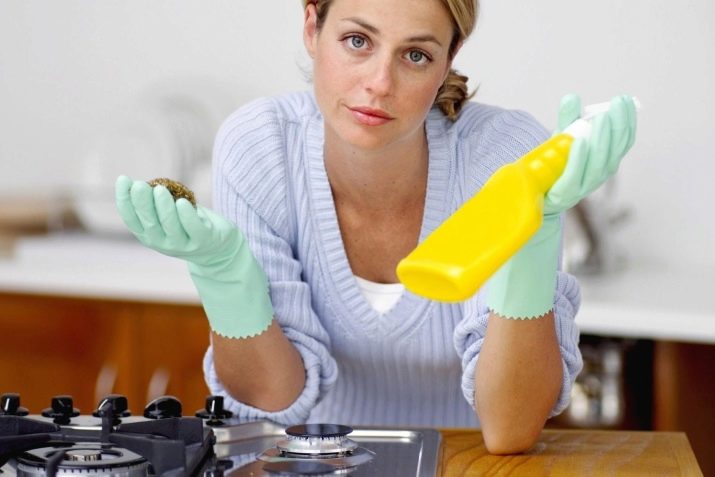
Why is it difficult to remove a layer of soot?
Fat, food and other residues on the elements of the gas stove and utensils under the influence of temperature turn into hard to remove soot. This hot conglomerate exudes carcinogens that are harmful to human health.
The carbon layer remains on the grill after each use of the stove, and if it is not washed off immediately, then the layers gradually form an unpleasant, multilayer, stiff and strong crust. Particles of soot literally eat into the metal. This is what creates the known problems with cleaning some types of dishes, as well as with a gas grill.
Nagar not only spoils the appearance of the grill, exudes an unpleasant odor that negatively affects health, but also destroys the metal, changing its heat-conducting qualities, which means it also worsens the quality of the cooked food.
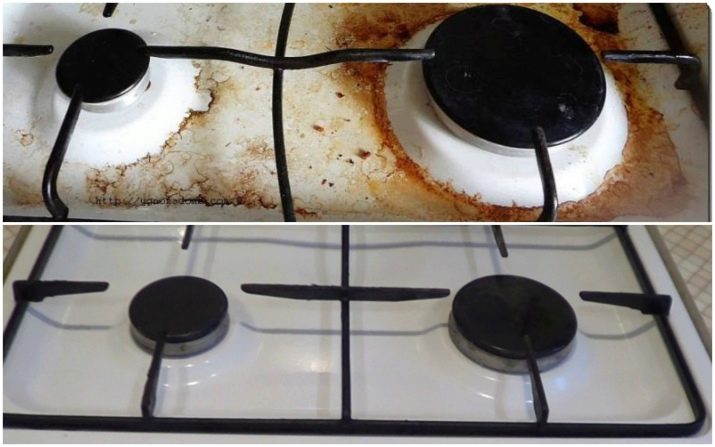
Given that gas stoves are made of different metals (enamelled steel, cast iron, stainless steel), which have different physicochemical properties and react differently to the formation of soot, various methods and means are used to clean them.
Cleaning the grill from different materials
Cleaning the cast iron grate
Cast iron is a heavy and brittle metal, afraid of water and well retaining heat. It must be cleaned with care. Methods for cleaning it include, for example:
- Calcination. It is safer to calcine in the fresh air or at home, having previously opened the windows and turned on the ventilation, as toxins evaporate when soot burns out. The product is held over the fire, turning it from time to time, until the main part of the carbon burn out. The remaining dirt is removed with a damp cloth;
- Compositions for cleaning motor vehicles. By applying the product to the surface, the deposit is quickly removed, the quality of cast iron does not suffer after such an operation;
- You can remove carbon deposits from the surface of the grill using metal brushes or special nozzles on the drill. Constantly using this method is not recommended, since in the process of this procedure, the upper layers of the material are erased.

Cleaning the stainless steel grill
Stainless steel - high-strength and resistant to chemicals and abrasives, for cleaning which use a variety of methods and aggressive substances:
- Mechanical methods. Cleaning is done with river sand, soda or metal brushes. The metal is wetted and then the time necessary for cleaning is processed. Microdamage does not affect the quality of the stainless steel;
- Self-made cleansing pastes. Recipes:
- dilute about a hundred grams of washing powder with ammonia (30 ml), then coat the material with this composition and hold for 15-20 minutes, then wash the product;
- mix soda ash with hydrogen peroxide to a state of liquid porridge, which is used to wipe the wire rack with a rough sponge, and then wash off the dirt in running water;
- dilute mustard powder with vinegar (9%) in approximately equal proportions, add a small amount of dishwashing liquid to the composition. Apply the resulting slurry to the area to be cleaned for 20 minutes, then rinse with hot water using a sponge;
- Use a paste of the following composition: stationery glue (50 ml), soda (150 grams), washing powder or some other detergent (50-60 grams). Mix the parts and coat the product with this thicker composition. When dried, the composition becomes transparent and is easily washed off in hot water along with soot.
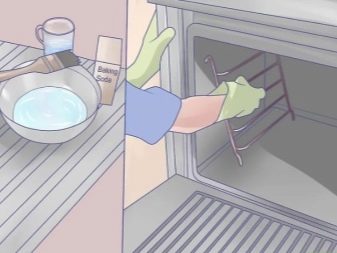

It has proven itself to clean stainless steel Activated carbon. To do this, a paste is prepared from crushed coal and water, which is applied to the grill for 20-25 minutes. After this, soot is easily washed off with warm water.
Enamelled grill cleaning
Enamel-coated products are usually lightweight, durable, but they are extremely prone to chips and are sensitive to chemicals. Therefore, methods of removing carbon from them should be gentle:
- Soak the grate overnight in a few liters of concentrated soap and water. After which carbon deposits are removed with a sponge and hot water;
- Use melamine sponges - the latest tool for cleaning contaminants. They are made from a special resin, which after special technology receives abrasive properties. Melamine sponges do not damage the product, and due to their relative softness they effectively clean the surface.
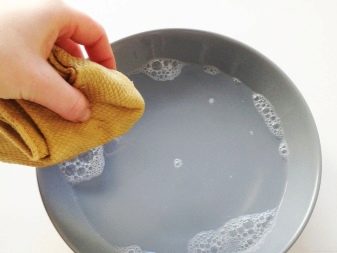

The universal cleaning methods applicable for various metals are conventionally classified as:
- laundry soap dissolved in warm water;
- citric acid;
- vinegar essence;
- ammonia or ammonia;
- baking soda.
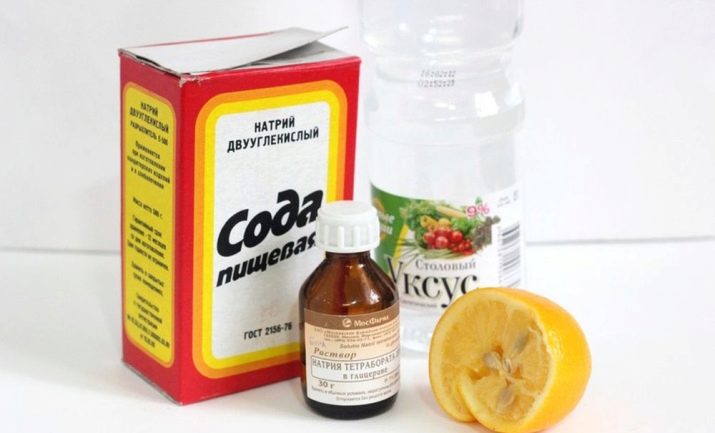
Folk remedies
The disadvantages of chemical detergents are known to all.For this reason, many housewives give preference to old and proven folk remedies, which, with a competent approach, can provide not worse, but safe for health results.
Boiling
Boiling in the oven is carried out in the following way:
- Five tablespoons of soda (per ten liters of water), a grated bar of laundry soap and a grated apple are added to a large container of water.
- Soda, due to its acidic properties, has excellent cleaning properties.
- Malic acid gives the surface a glossy finish.
- After immersing the grate in the solution, it is boiled for a long time, then the residual carbon is removed and wiped dry.
There is an easier way: place the wire rack on a baking sheet and place in the oven for 30 minutes (maximum burning mode). After such boiling, soot is easily removed.
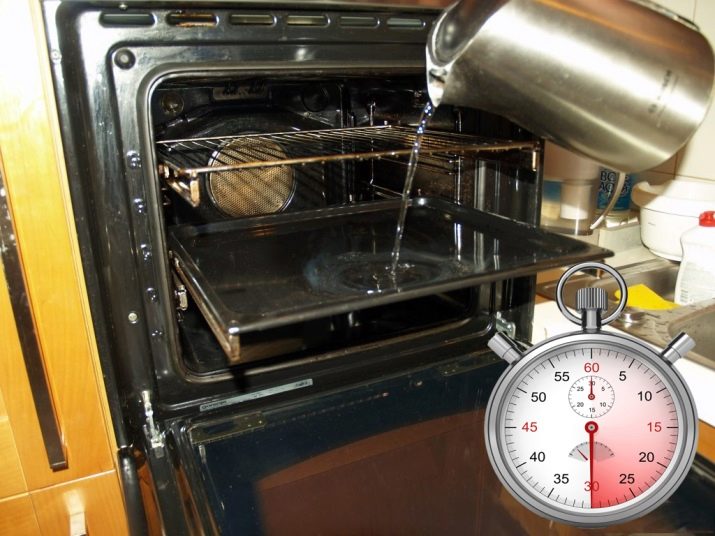
Ammonia
In cases where the grate is heavily contaminated, you can wash it with ammonia:
- To do this, use a capacious bag with a reliable latch or a strong garbage bag, place a grate in it and spray ammonia in the bag.
- For uniform distribution of ammonia, the closed bag with the contents must be turned several times.
- To sustain a lattice in it for a long time (5-8 hours). During this time, the deposit dissolves, leaving a dark brown liquid, and the grate becomes clean.
- Then it should be washed in water with the hard side of the sponge and wiped dry.
Since ammonia easily evaporates, it is better to carry out this procedure in fresh air with gloves and a respirator, and soak the grate in a tightly closed container.
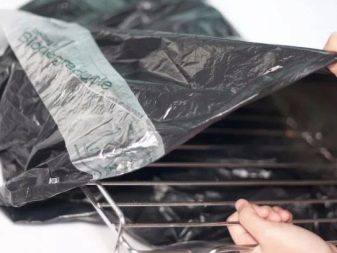
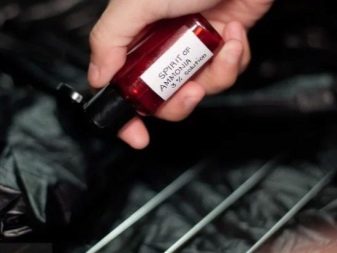
Mustard powder
Mustard powder is a proven and productive way to cleanse fat deposits and soot from household items. To do this, you must:
- Using a slightly damp cloth, cover the grate with plenty of powder;
- put it in a large container and stand for 2-3 hours;
- In the future, rinse the grate with warm water using a sponge.
You can prepare a composition including mustard powder and water, cover it with a wire rack and place it in a garbage bag, tying it tightly. Keep the structure in the bag for 3-4 hours, after which the contaminants are removed with a sponge and hot water.
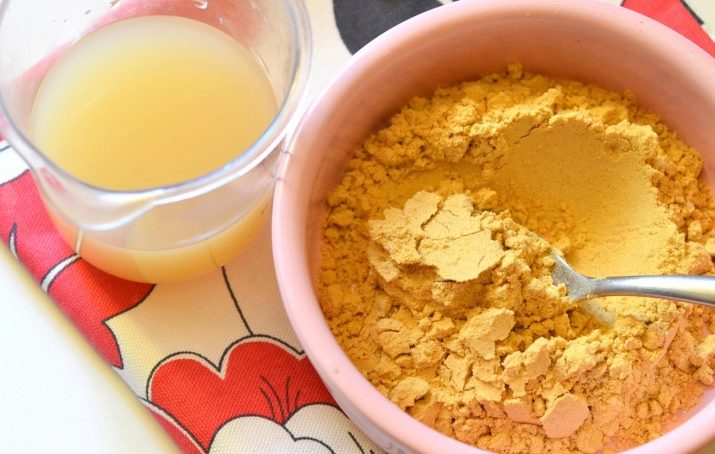
Laundry soap and stationery glue
A cast iron grate is quite easily washed from soot with the help of laundry soap and stationery glue:
- Fill a large container with water (about ten liters), add grated soap (about two-thirds of the bar), add about 150 milliliters of glue to the soap while mixing and dissolving it;
- Boil the solution and then, placing the grate in it, boil over low heat for 1-2 hours;
- To take out a lattice and to place, without allowing it to cool down strongly, in water;
- Then, for greater effect, you can use a melamine sponge. The method is time consuming, but effective.
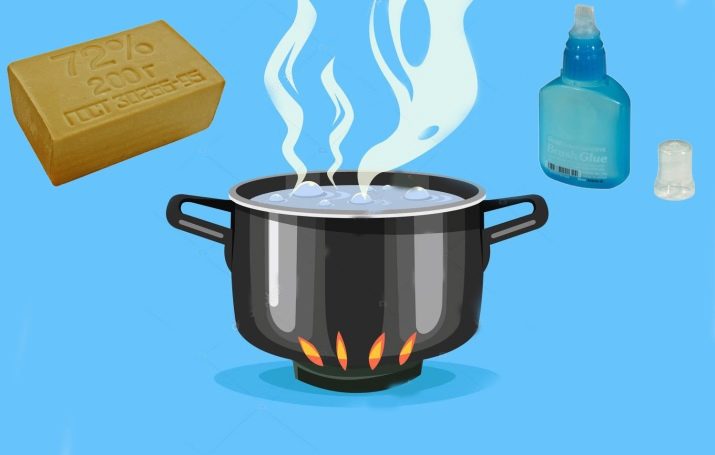
Baking soda
Soda, like mustard, has long been used to clean contaminated surfaces. The cleaning procedure is as follows:
- Place the grate in standard sizes with a durable garbage bag or other bag;
- Pour 500 grams of soda there and pour water. Close the bag tightly and then shake it several times;
- Keep the product in the bag for 2-3 hours, turning it over and over;
- Remove the grate and rinse it thoroughly with water using a sponge.
Another way is to dilute soda with warm water to gruel. Cover the wire rack with this gruel and leave for 40-50 minutes. This time is enough for soda to react with soot and to a large extent soften it. Then you should clean the grate with a rough, and then the soft side of the sponge.

Silicate glue and powder for washing
Composition of silicate glue and washing powder is an old method that effectively helps to clean the surfaces of products from fat growths and soot. In this case, about 40 ml of glue should be mixed in 500 ml of warm water, add about 150 grams of washing powder. Place the product in a large plastic bag and stand there for 4-5 hours.
After that, do not forget to rinse the product with a household sponge in hot water.
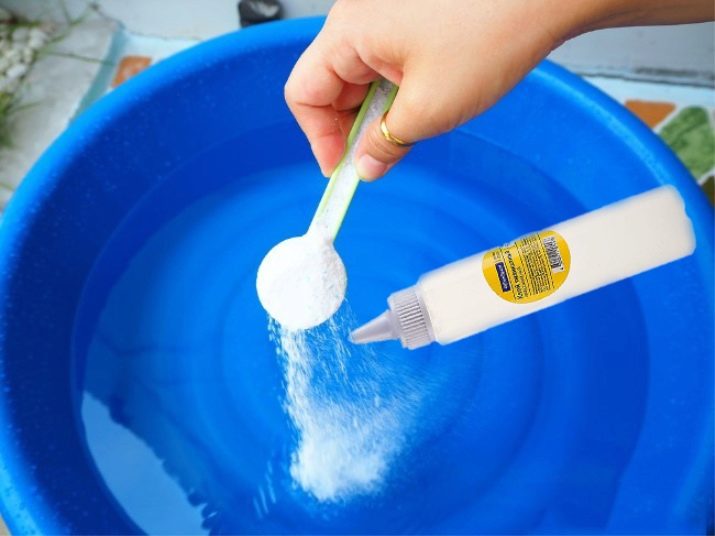
Soda and Vinegar
A solution of vinegar and soda will also help to qualitatively clean the product:
- Fill a suitable container with medium temperature water;
- Pour into a container about 250 grams of soda and about 250 grams of vinegar (9%);
- Place the product to be cleaned in the container and keep it in solution for 2-4 hours, and then rinse thoroughly.
This solution is effective for particularly dirty surfaces. Soaking time is determined depending on the degree of contamination of the product.
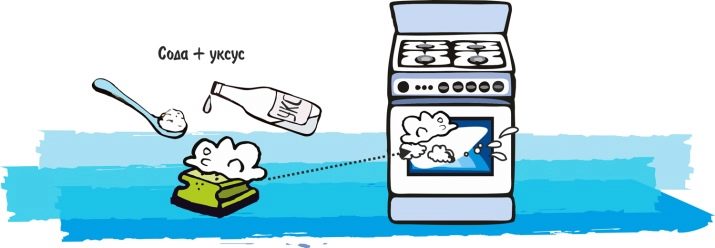
Chemicals
Of the chemical cleaning agents, perhaps the best effect can be achieved using formulations such as Sif, Sanita, Shumanit, AmWay, Oxyday, Primalux and others. These substances, according to the attached instructions, are easy to use. The principle of their use is simple - the substance is applied to the surface to be cleaned, then they hold a pause of several hours, after which the dissolved carbon is removed with a household sponge.
Typically, the manufacturer of such products makes a special mark on the packaging "Anti Fat". However, in the selection process it is extremely important to consider the material of the workpiece. So, for the stainless steel produce special gentle substances that preserve their high-quality appearance.
Chemical compositions also differ in their consistency - gel, in the form of sprays and other types.


Of the popular and well-known are:
- Cleaning cream Sif. Universal product suitable for various surfaces. It contains microgranules of mineral substances and biological additives that break down fat, carbon deposits and rust, while maintaining the surface of the product. The cream is economically consumed and applied with a sponge. Then the composition is rubbed and incubated for 10-15 minutes. Then wash off with the remnants of soot;
- Sanita. Means on an alkaline basis, suitable for all types of coating. Does not damage the surface, does not leave any scratches. It is made in the form of gels and sprays. It can decompose fat in a few minutes. In addition, Sanita cream has a disinfecting effect, economical;
- Shumanit. Production Israel. It well softens contaminants, but can negatively affect the skin and respiratory system. The composition is applied in a thick layer to the grate, which is then placed in an airtight bag overnight. Then the soot is washed off with a soft sponge;
- AmWay. Effective and safe gel, without abrasive inclusions. Universal cleanser, removes old and deeply ingrained dirt from various metals without damaging them. Softened with this composition, carbon deposits are removed with a household sponge. Excellent tool, but having a high price tag;
- Cillit bang. This powerful tool is effective for removing fatty deposits and soft soot. Does not contain abrasive inclusions. After application, it is aged 15-20 minutes, and then washed off. Represents the mid-price category of cleaning products on the market;
- Paste Astonish. Gently and reliably cleans old pollution. It contains active components - sodium silicate, as well as soft abrasive inclusions.
- Primalyuks. Its use depends on the type and quality of contamination. Able to successfully clean carbon deposits. It is diluted with water in the proportions specified in the instructions. The concentration of the agent is selected in a practical way, depending on the nature of the contaminants removed. It can be used in a closed system of washing repeatedly. Application in hot water significantly improves cleaning efficiency. Brushed to the surface;
- Oxyday. Environmentally friendly product from organic components for deep cleaning. After application to the surface, the composition processes organic fat layers. In addition to deep cleaning, it destroys pathogenic bacteria and acts as a natural disinfector.
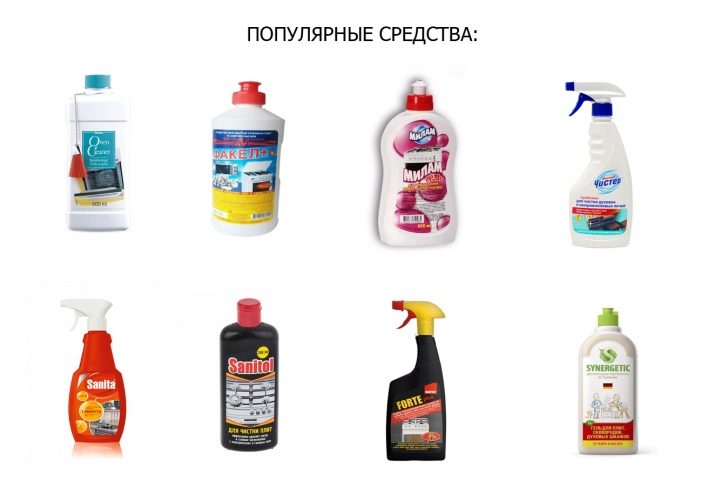
To quickly dissolve contaminants, acid and alkaline compounds, as well as other aggressive elements, are often included in chemical cleaning agents. Therefore, when working with chemical compounds, it is important to adhere to safety rules:
- It is necessary to work with rubber gloves;
- It is important to use a respirator, since some components in the composition of cleaning products affect not only the product being cleaned, but also the person, his skin and respiratory organs;
- During the cleaning process, various impurities appear in the air. Therefore, the process is best carried out in a well-ventilated area. At this time, children and animals should be removed from the cleaning site.
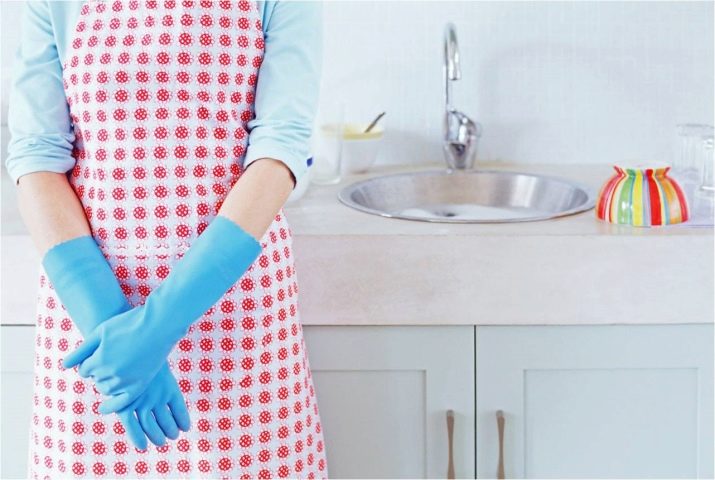
Effective Ways
The use of household appliances is one of the simple and productive methods of cleaning and washing the cast-iron grate of a gas stove at home. The dishwasher is suitable for this if the grate is small or dismantled into parts and easily fits in the dishwasher. The mode of operation of the machine in this case is set the longest, at maximum temperature. In the case of fresh soot, the grill will be cleaned quickly. Many years of soot will soften, and it can be cleaned with a household sponge.
If there is a household steamer at home, the grill is placed in a vertical position and a steam stream is directed at it for several minutes. When the carbon is softened, it can be wiped off with a rag or household sponge using detergent.
However, the most effective way to clean the grate from grease and other dirt is to quickly wash it immediately after the first plaque. This procedure is the easiest and most uncomplicated.
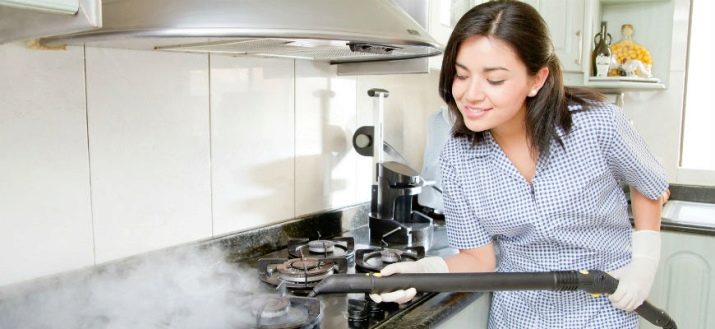
For cleaning products made of cast iron and steel, the calcination method is excellent. For this, the grate is placed over the fire and kept turning over until the burnt pieces of soot and old fatty layers are showered. Residual dirt is removed with a brush and wiped with a slightly damp cloth.
Cast iron products are not recommended for washing with water. At home, you can calcine the grate above the stove, creating good conditions for ventilating the room (put the hood to the maximum power level and open the windows). A safe, harmless and effective means of cleaning is the complex composition of soda, mustard powder, salt and vinegar (mixed in equal proportions).
The mixture is applied to the surface of the product and aged for 3-4 hours, then the grate is washed and wiped dry with a cloth.
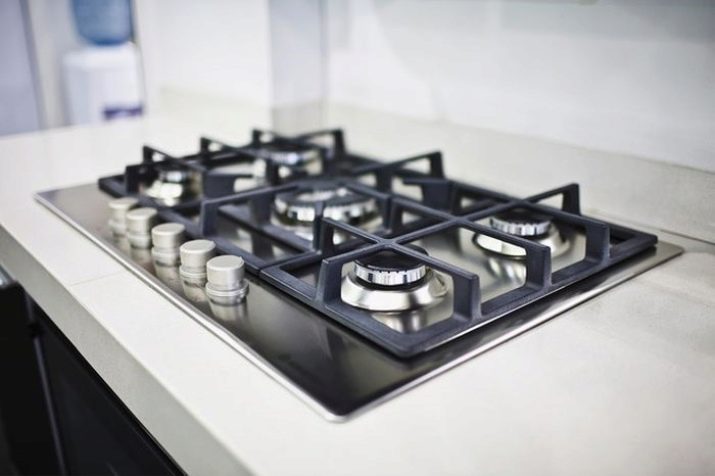
How to prevent pollution?
To facilitate the cleaning process, it is largely necessary to carry out some simple rules:
- Wipe grates and stove regularly after use;
- Clean the grate every week. A good cleaning method is to immerse the product in a soap solution overnight, after which it is imperative to wipe it dry, since grease and dirt more intensively cover a moist surface.
Compliance with these simple rules will well serve to preserve health, significantly save time and finances.
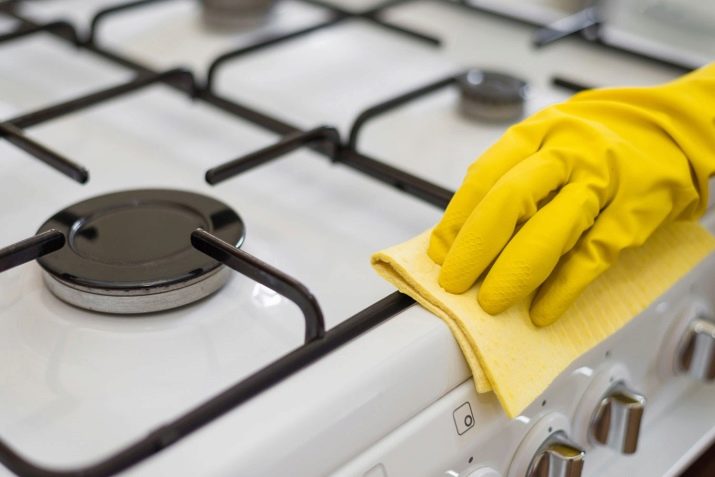
Not recommended:
- soak hot products immediately after the food is cooked - a significant temperature difference deforms the metal structure;
- Sanding cast iron gratings made in China. These gratings are made from the so-called white cast iron, which has the lowest strength characteristics of all its types.
It must be remembered that ordinary sand is rich in various types of microorganisms and bacteria. Items cleaned with sand need to be thoroughly washed, and it is better to just use a safe abrasive, for example, soda or other means.
For more details on how to clean the gas stove grill, see the next video.










